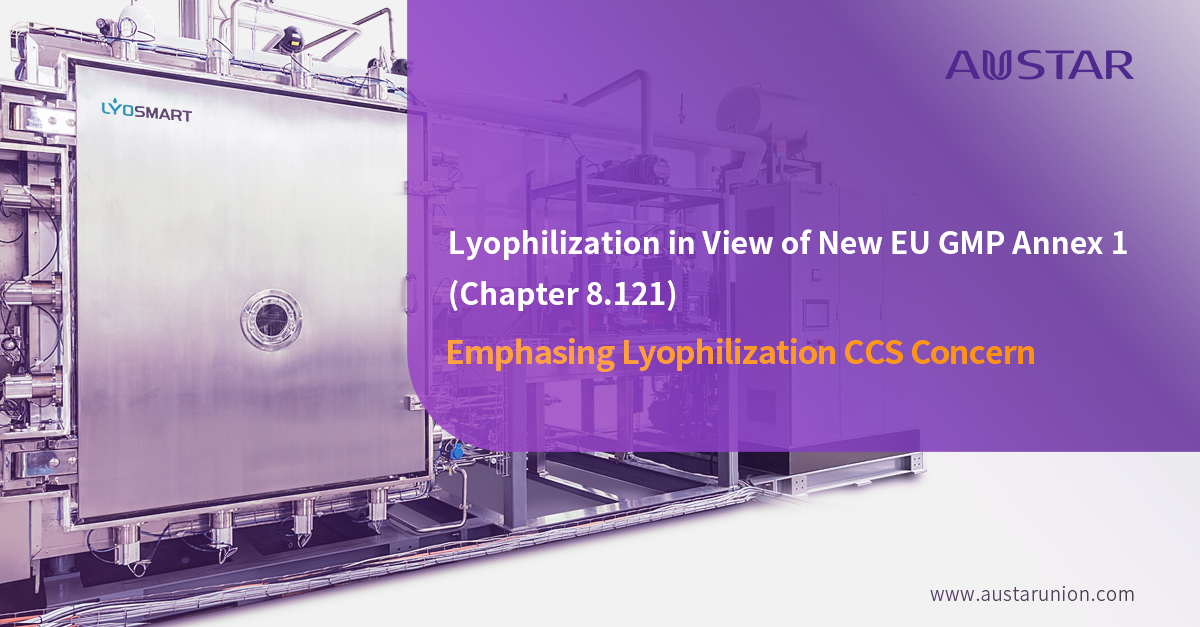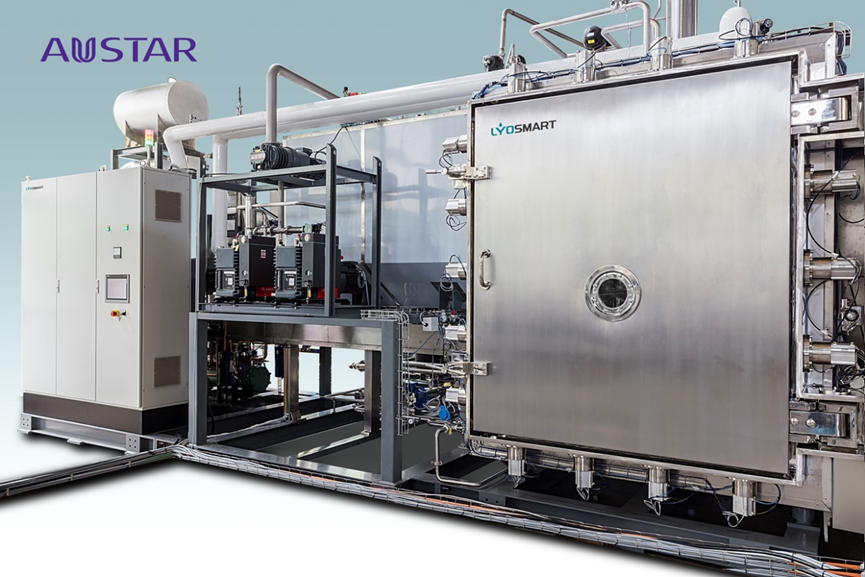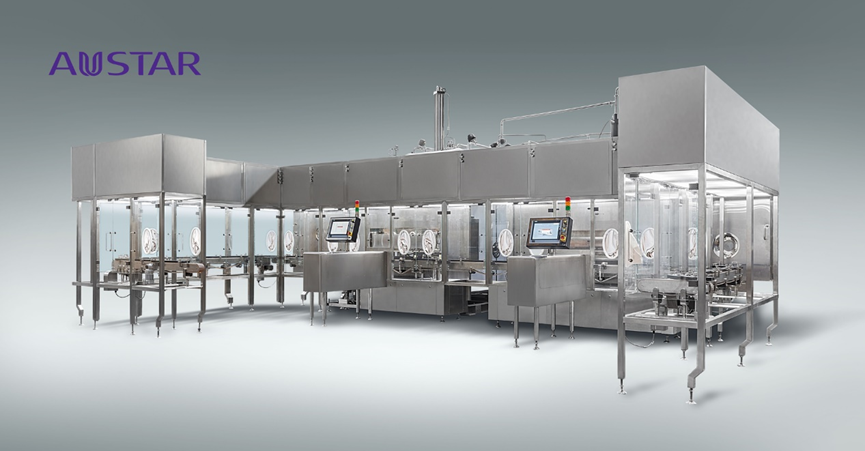Lyophilization in View of New EU GMP Annex 1 (Chapter 8.121); Emphasizing Lyophilization CCS Concern
News & Insights2023-01-11
Annex 1 recommends that Contamination Control Strategy (CCS) will be documented, designed, constructed, executed and implemented for aseptic processing. Only an experienced engineering company that combines skills as experienced process engineers, lyophilization experts, microbiologists, and aseptic technology experienced experts can deal with the new extreme challenge requirements in particular SVP (Small Volume Parenterals) lyophilization.

Annex 1 recommends lyophilization technology as an extension of aseptic processing of the sterile product. Therefore, lyophilization and its allied activities are considered critical process steps: extra handling, extra time exposure to contamination, long process, extreme functioning conditions, makes products higher sensitive to particulate, endotoxin, and microbial contamination, but lower possibilities for detection compared to the regular aseptic filling process. Higher attention and process CCS are required, products quality must be built and documented within its process. Drugs manufacturers are responsible to implement Annex 1 strategy in their plants.

CCS assessment simulation and validation are required, ensuring the prevention of particles, microbial and endotoxins contamination The CCS is based on the QRM (Quality Risk Management) the company's in-house CCS policy, defined in line with the needs of the developed sterile products and the features of equipment and facilities must fit these requirements. It is required that manufacturer CCS shall be risk reviewed periodically, to ensure the consistent, repeatable assurance of the sterile lyophilized products by the entire system.
1.lyophilizer and its utensils sterilization, its holding, and its handling should be designed ( in addition to the preloaded product aseptic handling, while filling). Sterilization frequency will be assessed according to the risk to system contamination while use. Manually loaded, non-barriered lyophilizers are in special contamination risk therefore, lyophilizer’s sterilization cycle prior to each cycle loading is recommended.
2.Lyophilizers'vials transfer, loading and unloading systems should be designed to minimize human intervention. When isolated Automatic Loading Unloading System is used, sterilization frequency should be justified and documented as part of CCS. Cleaning process is recommended after unloading, prior to any sterilization process.

3.Lyophilizer are constructed of Stainless Steel. It function in extreme temperatures from deep freezing of -85°C to sterilization temperature of +125°C, from nearly absolute vacuum to sterilization pressure of 2.5 bars. While functioning within these extreme conditions, lyophilizer’s structure is thermally stressed. Therefore lyophilizer’s structure and its vent filters integrity should be tested following any sterilization and during lyophilization. Proper structure and integrity will prevent external contamination. Testing results should be documented as part of batch release documents. Maximal allowed air leakage value should be verified prior to each lyophilization cycle.
4.Lyophilization trays and shelves flatness should be checked to verify it is not deformed: for heat transfer purpose and possible miss- stoppering identification.
5.Loading pattern, partial loads should be specified validated and documented.
6.Handling of opened /semi-opened vials should be done in grade A condition. All sorts of LAF protection and automation systems should be used for eliminating human intervention frequency. Semi opened vials staging zone will be in grade A condition.

7.Very well trained personnel are required for the validation, monitoring, releasing, visual inspecting, and laboratories testing of lyophilized products. A qualified skillful engineering company is recommended to be your partner in the facility validation, staff training for process activity.
8.Utilities design, including in-process control positions and relevant technology with no human intervention should use state of the art design.
9.For the lyophilization process, product containers and closures selection must fit the freeze-drying thermal stress conditions, minimizing breaks/cracks.
10.Justified vendors selecting especially for aseptic technique and lyophilization equipment and approval – such as key constructors validators and component suppliers.
11.Management and validation of outsourced activities e.g. contract sterilisation services.
12.Preventative maintenance performance and documentation – maintaining equipment, utilities and premises (planned and unplanned maintenance) to a standard that will ensure there is no additional risk of contamination.
13.Lyophilization – trends analysis, detailed investigation, root cause determination, corrective and preventive actions (CAPA) and the need for comprehensive investigational tools. Following continuous improvement based on information derived from the above.
Required Documentation
The manufacturing and control of lyophilized products require detailed technical and process knowledge, well trained technicians and operators complex process technologies.
Therefore each required process phase should be recorded and documented starting from:
1.Compounding, quality compounding attributes, and filtration data.
2.Filling and loading, QBD, SPC and PAT records.
3.Filling environmental monitoring EM.
4.Lyophilization and stoppering records.
5.Unloading and crimping records.
6.Detailed 100% visual inspection, rejected categories and yield calculation.
7.Balance and units yield in each stage.
8.CIP record.
9.SIP including all primary piping and valves records.
10.Filter integrity test - FIT records.
11.Lyophilizer integrity test.
12.Packaging records.
13.Balance of product and packaging materials.
14.Analytical results.
What is the CCS for Lyophilization?
Contamination Control Strategy (CCS) – A planned set of controls for cross contamination in the processing line, lyophilizer, environment exposure and controls, human hygiene protection, product protection: microorganisms, endotoxin/pyrogen and particles, derived from current product and process understanding that assures process performance, repeatability and product quality. The controls can include parameters and attributes related to active substance, excipient and drug product materials and components, facility and equipment operating conditions, in-process controls, finished product specifications, and the associated methods and frequency of monitoring and control.
Implementation of CCS for Lyophilization
According to the updated Annex 1 GMP requirements, the CCS for lyophilization is following summarized:
1.The sterilisation of the lyophilizer and filling line associated equipment should be validated and sterilization frequency should be justified.
2.The holding time between the sterilisation cycle and use should be appropriately challenged during aseptic process simulation (APS).
3.Lyophilizers and associated product transfer and loading/unloading areas should be designed to minimize operator intervention.
4.Adequate protection should be provided for the products from filling to lyophilization, such as using aseptic transfer, by selecting the appropriate barrier technologies.
5.The lyophilizer chambers and condensers should be thoroughly cleaned, washed prior to sterilization.
6.Design and selection of loading and unloading method for the lyophilizer.
7.The frequency of lyophilizer sterilization should be selected, risk assessed, justified and recorded.
•Manual: before each load.
•Automatic: need to be justified and documented.
•The lyophilizer should be sterilised regularly, based on system design. Re-sterilisation should be performed following maintenance or cleaning. The frequency of lyophilizer sterilisation should be determined based on the design and risks related to system contamination during use.
The new EU GMP Annex 1 has added the requirements on integrity under the section “Lyophilization”:
1.The filter used for gas filtration and vacuum break should be sterilized before each use of the system and its integrity testing results should be part of the batch certification/release.
2.Vacuum/leak integrity testing: in every cycle and before cycle starts.
Yossi Shapira AUSTAR Consultant
info@austar.com.hk
https://www.austarunion.com/







 Search
Search 中文
中文









